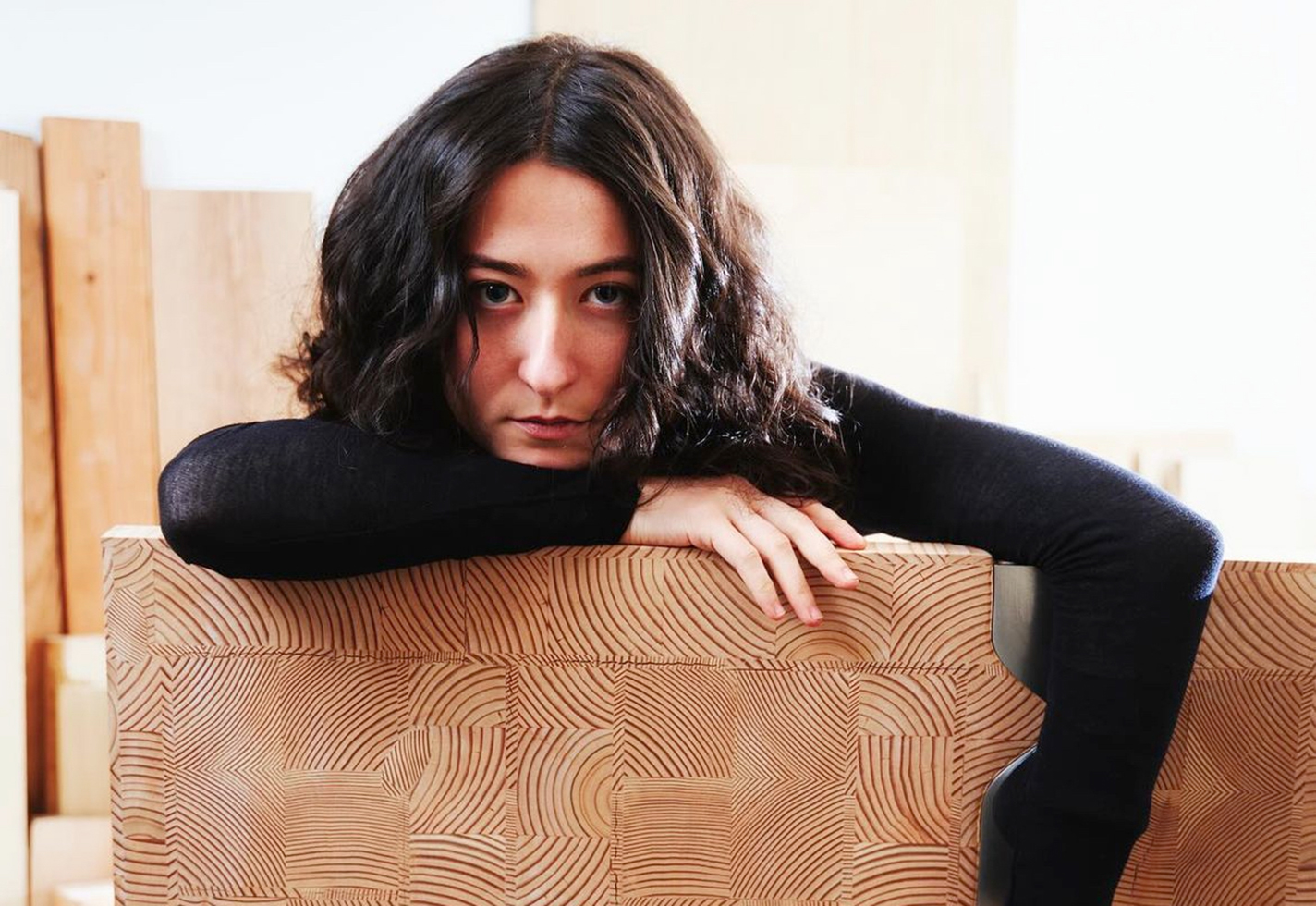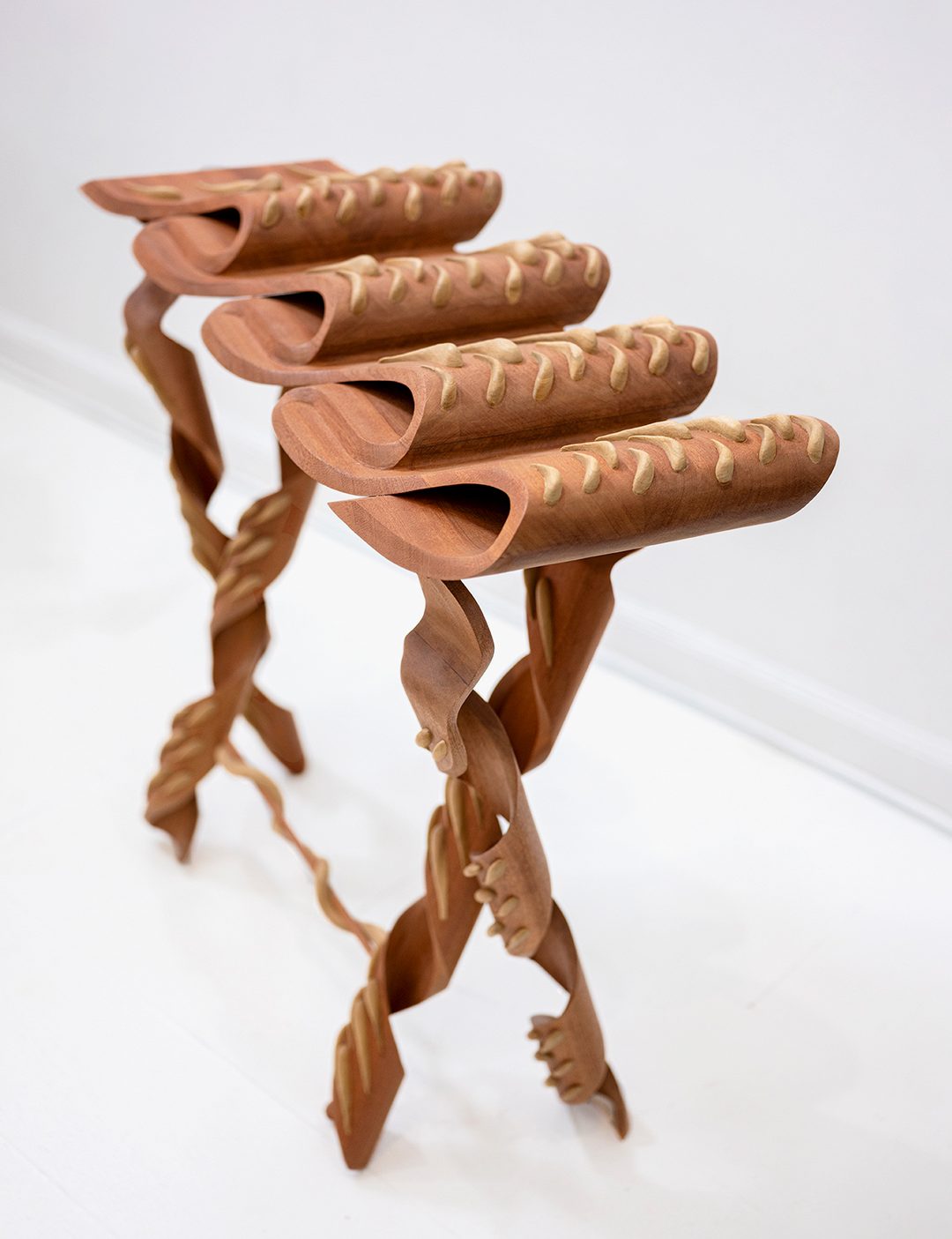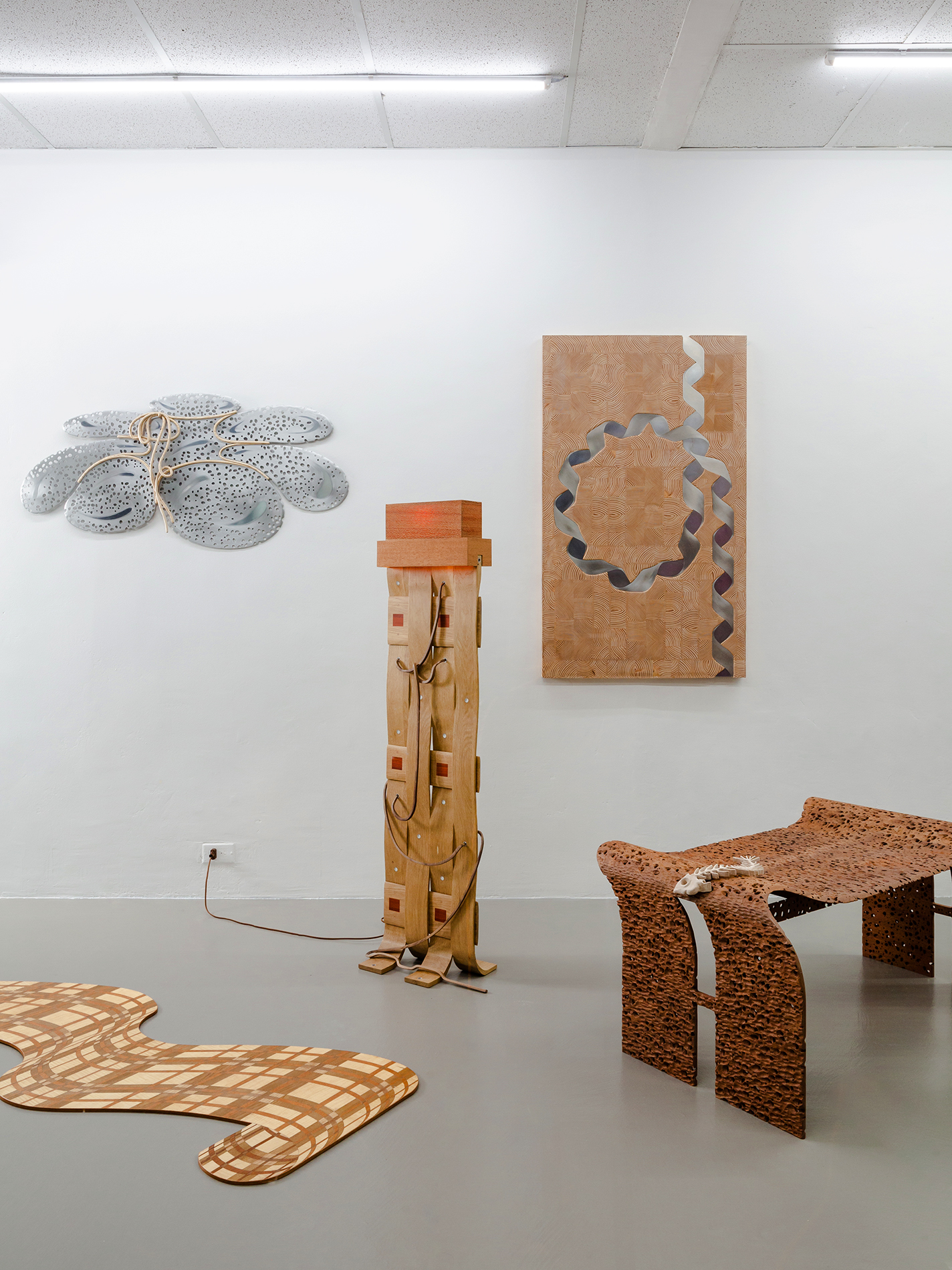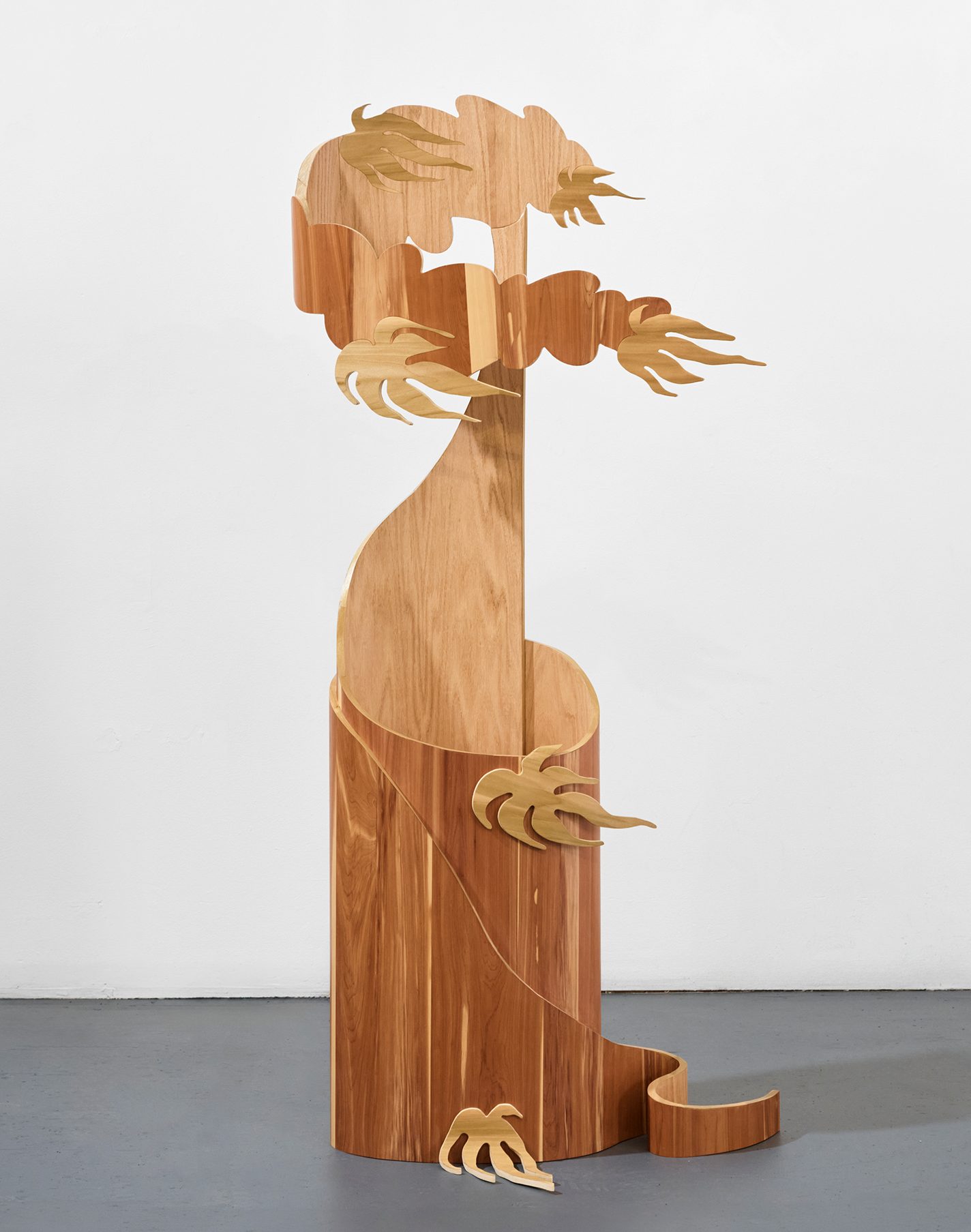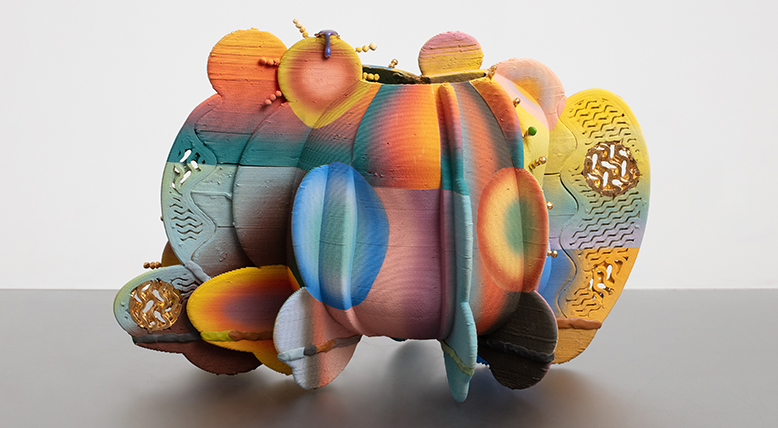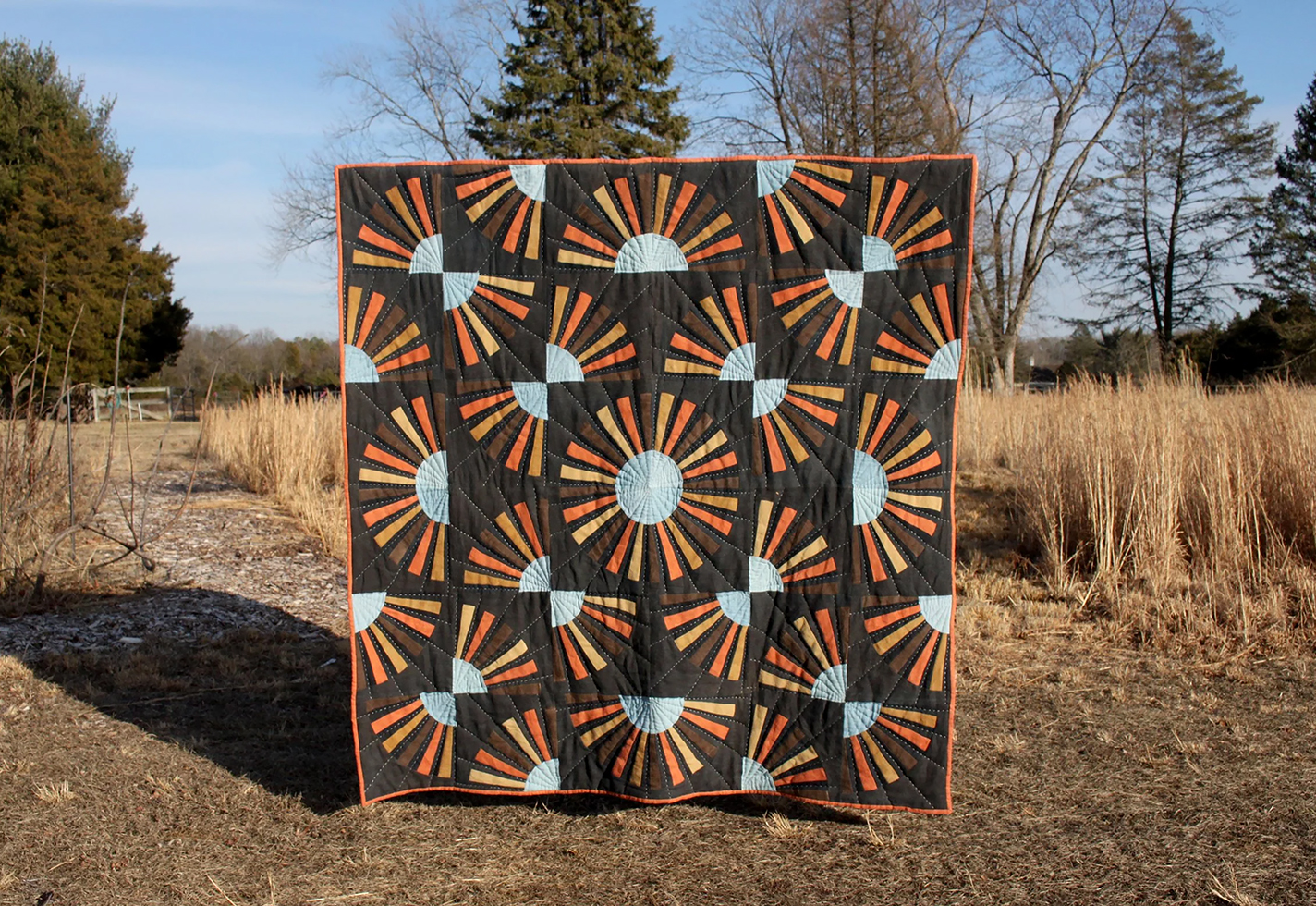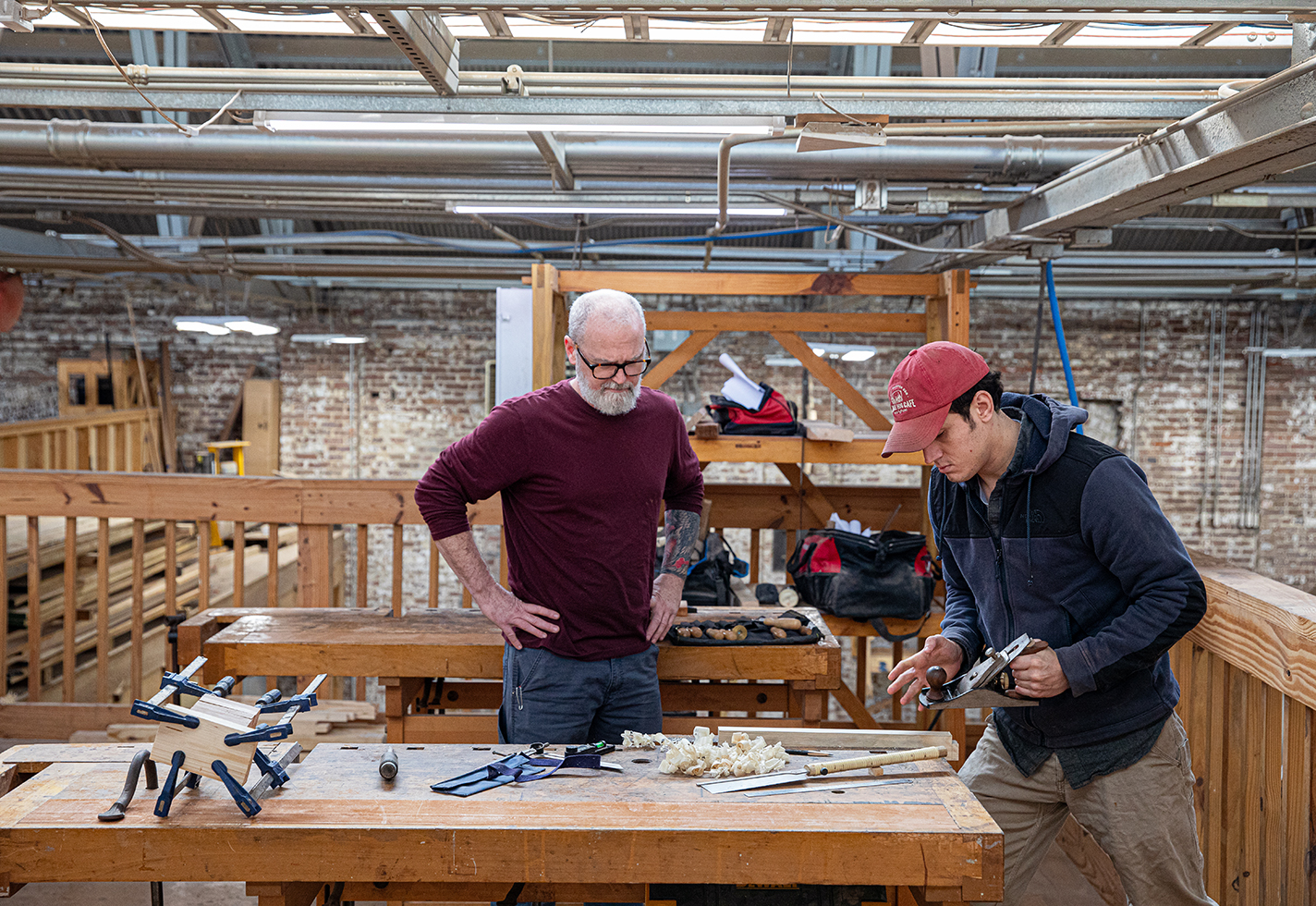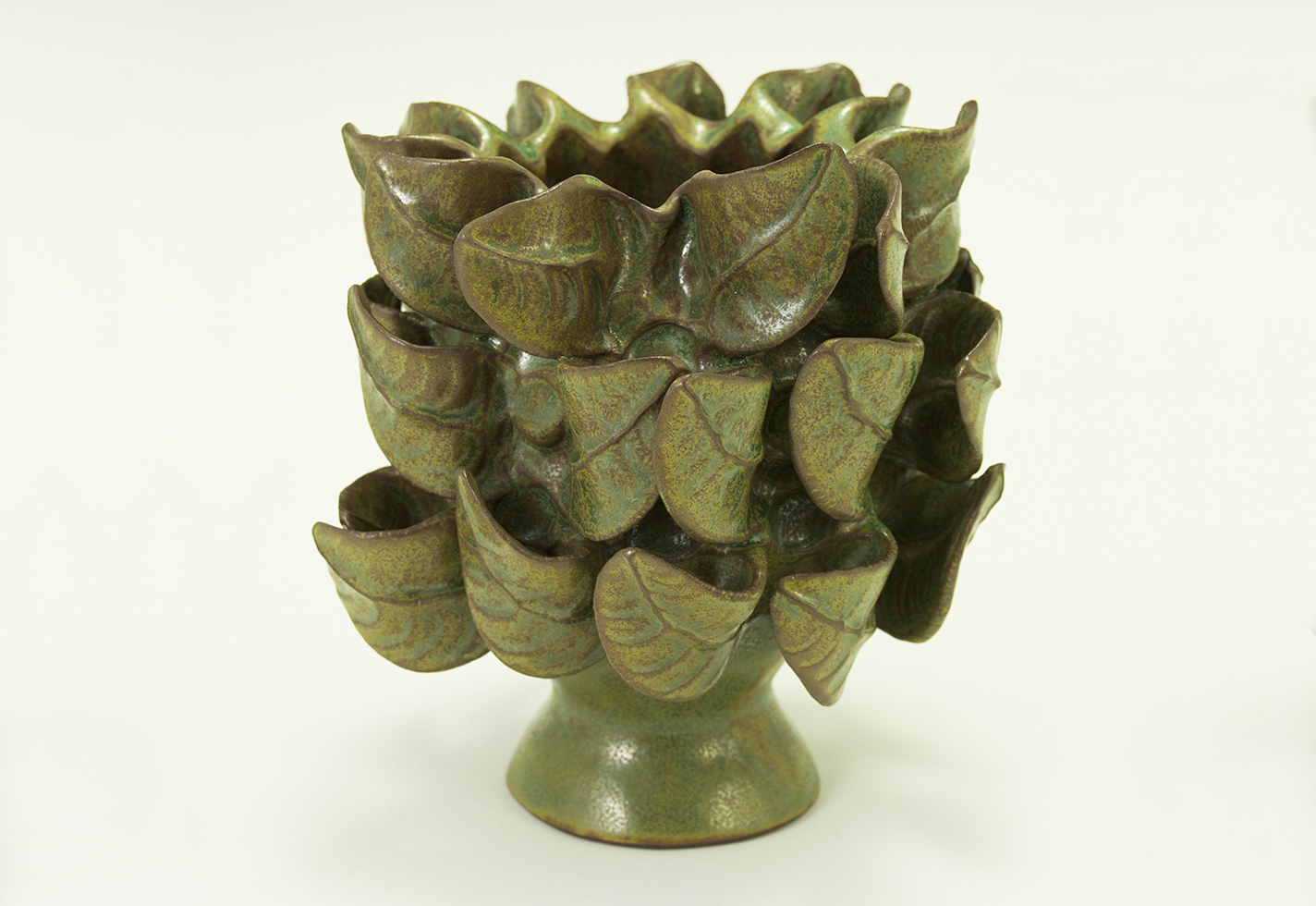Shaina Tabak’s sculptural furniture, made from hardwood, thin wood veneer, metal, and unorthodox materials (kitchen sponges, pool noodles), looks as if it’s about to evaporate, blow away, or unfurl in the wind. That’s by design.
For a recent work, Extruding Sprout, Tabak stacked poplar, aluminum, and the aforementioned sponges into a 73-inch-tall, coat rack–esque totem. She 3D-modeled the dimpled wood base, then drilled holes in it with a CNC router before finally hand-shaping them. The sculpture’s holey aluminum is plugged with small pieces of wood. At the top, brown-dyed resin-coated sponges peel open like a banana to reveal still more kitchen sponges—in their original yellow hue—assembled into a hollow periscope.
The result is a study in material experimentation. “I always had this obsession with combining different materials together that don’t go together,” Tabak says. “Wood is the least processed material. Metal is still found in the earth, but it’s pretty processed. Manmade sponge is like the most processed out of all of it, but the way I treated these three materials kind of made them look as similar as possible.”
The 29-year-old’s fluency with technology enables this kind of alchemy. An alumna of the Rhode Island School of Design, Tabak has worked as a fabricator for sculptor Katie Stout, multimedia artist Genesis Belanger, and surrealist woodworker Hugh Hayden. She teaches CNC classes at Gowanus Studio Space in Brooklyn, where she is a member, and uses 3D modeling to map out her work.
Extruding Sprout is named after a command in Rhino, the computer-aided design software that she uses to create patterns and plan her work before fabrication. “I was thinking of a cardboard box,” she remembers. “I extruded it vertically and made every material—the wood, metal, and sponge—the same diameter and shape, and stacked them on top of each other in this inorganic, man-made way, while still thinking about something organic, like a sprouting flower.
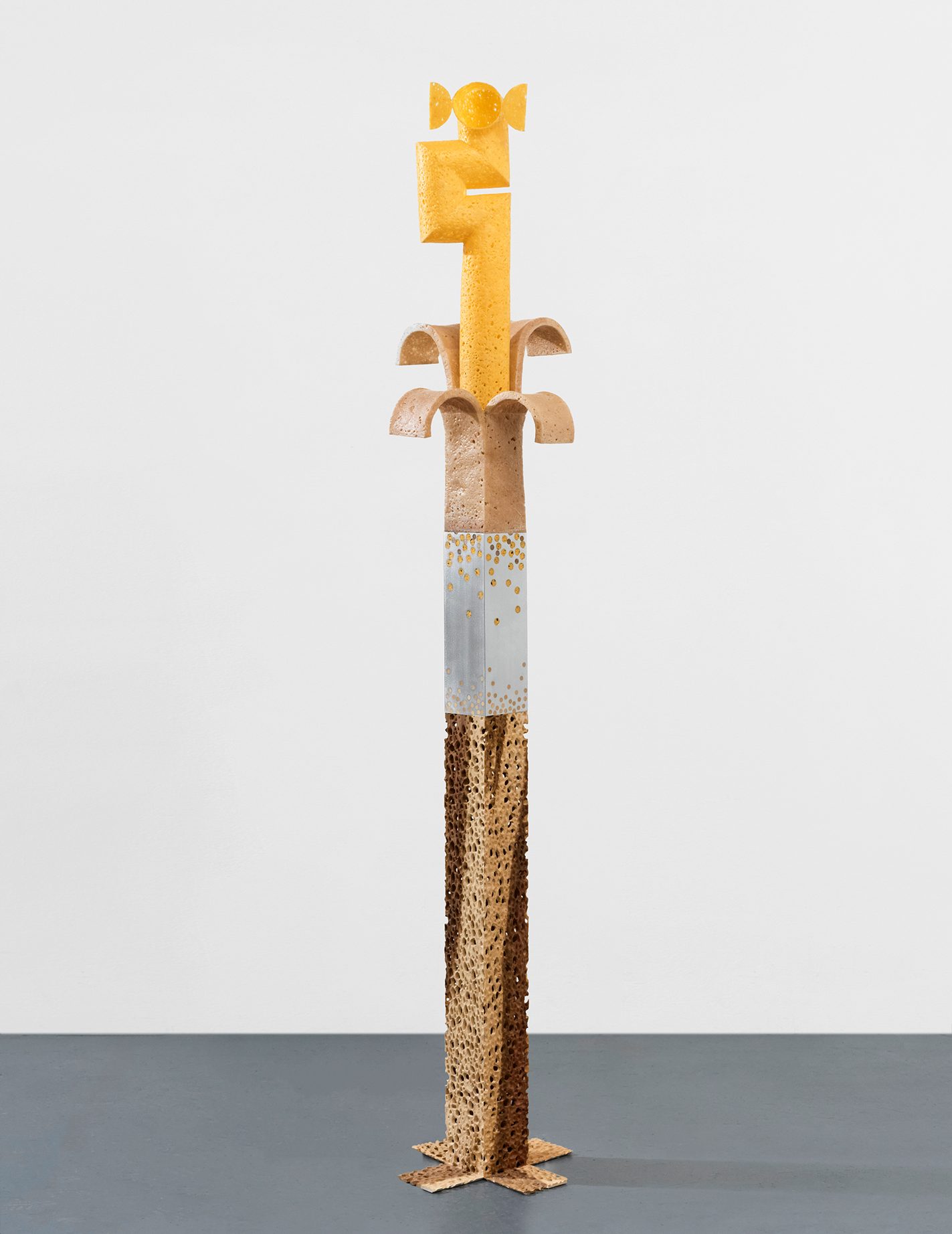
Extruding Sprout, 2024, aluminum, poplar, dish sponge, 73 x 15 x 15 in.
